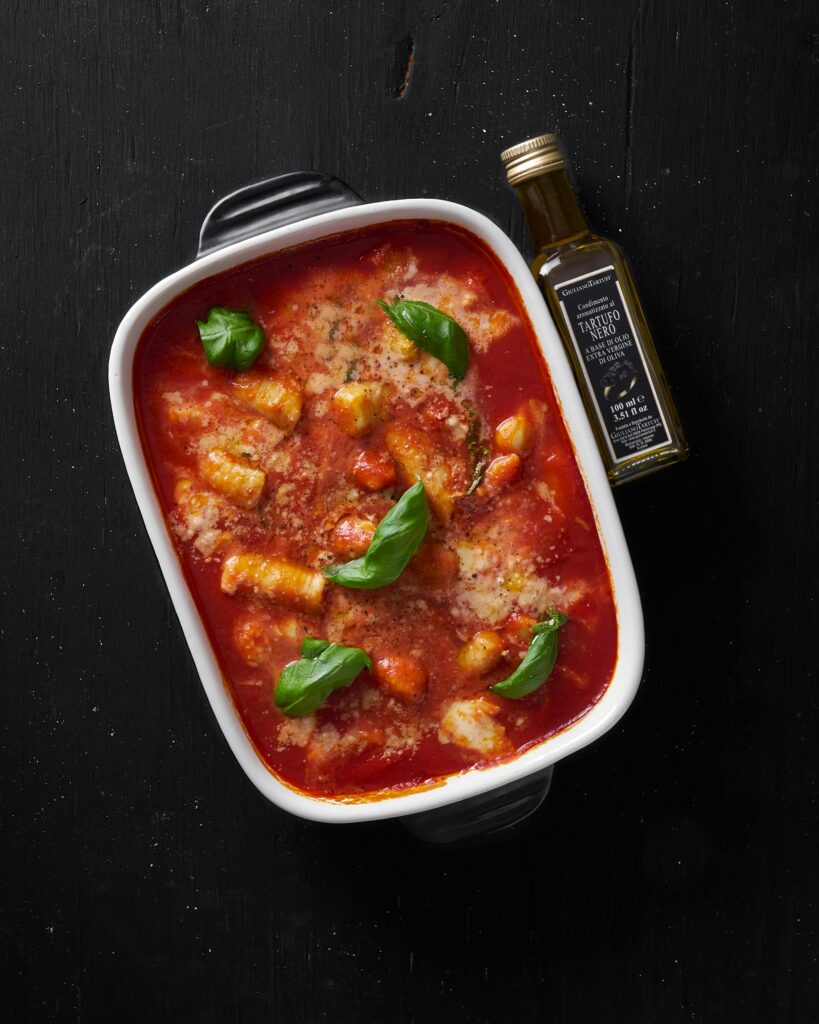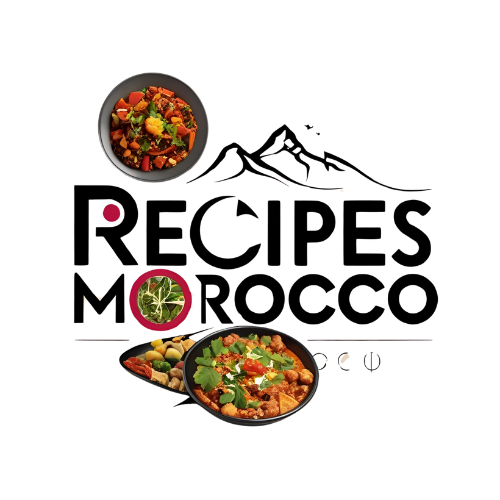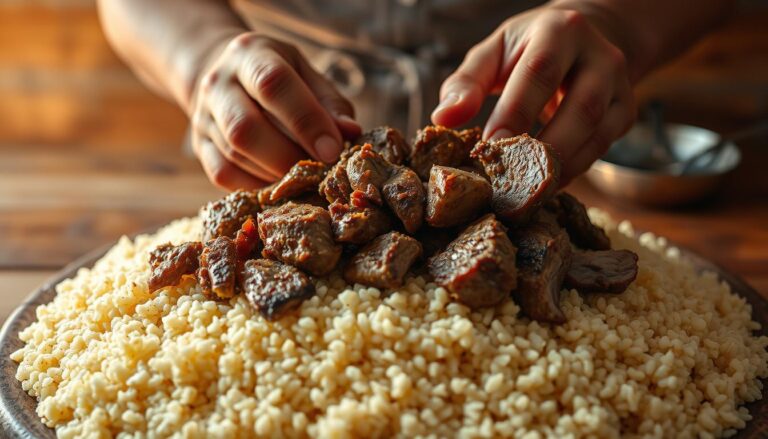Exploring Moroccan Flavors: An Overview of Traditional Recipes

Morocco is a historical and culturally rich country with a diverse range of Berber, Arab, and Mediterranean customs. This richness is reflected in its culinary scene, which offers a wide range of mouthwatering flavors, textures, and scents. The use of spices, fresh ingredients, and a range of cooking techniques define Moroccan cuisine, which frequently produces dishes that are both soothing and complicated. From the busy marketplaces of Marrakech to the tranquil seaside villages of Essaouira, food plays a crucial role in Moroccan culture as a way to celebrate and bond with one another in addition to providing nourishment. Ten classic Moroccan dishes will be covered in this guide, each of which reflects a distinct facet of the nation’s culinary legacy and offers insights into the flavors that contribute to Moroccan cuisine’s widespread appeal.
1. The main ingredient in Moroccan cuisine is couscous.
Often referred to as the national meal, couscous is perhaps the most well-known food in Morocco. Couscous, which is made from semolina wheat, is eaten steamed with a range of toppings, usually meats and vegetables. Couscous preparation is an art form that frequently involves families coming together to make the dish together. It is typically offered during weddings and religious holidays, among other important events and celebrations, and represents wealth and harmony among the community. Traditional couscous can be made in a variety of ways, with regional variations. For example, it may be served with lamb and apricots in the south, but seafood is more frequently served in the north. In order to enhance its flavor and make it a filling meal, the dish is often served with a rich broth that is spiced with a variety of spices like cumin, coriander, and cinnamon.
2. Tagine: A Legend in Cooking
The tagine, which gets its name from the clay pot used to prepare it, is a traditional Moroccan meal that epitomizes the slow cooking philosophy of the nation. The distinctive conical cover of this dish keeps the food wet and tasty by allowing steam to circulate. Because tagine can be prepared with a wide range of meats, vegetables, and spices, it is incredibly versatile and may be combined in countless ways. Lamb tagine with almonds and prunes, vegetarian tagine with seasonal vegetables, and chicken tagine with preserved lemons and olives are all well-liked versions. The slow-cooking technique creates a dish that is fragrant and filling by allowing the flavors to blend together. Tagine, which is usually shared with family and friends and is frequently served with crusty bread, embodies Moroccan hospitality.
3. A Filling Soup, Harira
Many people have a particular place in their hearts for harira, a traditional Moroccan soup that is eaten to break the fast during Ramadan. The main ingredients for this filling soup include tomatoes, lentils, chickpeas, and a number of spices, such as turmeric, ginger, and cinnamon. Usually enhanced with meat, like lamb or beef, it is frequently topped with fresh herbs, including parsley and cilantro. In addition to being healthy, the combination of ingredients in harira gives it a rich flavor and a cozy warmth that is ideal for chilly nights. Harira is a popular staple in Moroccan homes and is eaten all year round, even outside of Ramadan. It is frequently served with dates or sweet pastries.
4. Pastilla: A Savory and Sweet Treat
Bastilla, another name for pastilla, is a delicious dish that exemplifies the nuanced flavors of Morocco. This delicious pastry, which is typically made with chicken or pigeon, is covered in layers of warqa, a thin, flaky dough. Pastillas are distinguished by their special blend of savory and sweet ingredients; the filling is usually seasoned with sugar and cinnamon, combining the savory meat with the sweetness of almonds and a sprinkling of powdered sugar on top. This meal, which represents luxury and celebration, is frequently served at weddings and other special events. Pastilla is a true culinary masterpiece that embodies Morocco’s rich culinary tradition because of the contrast of textures—the crispy outside and the delicate inside—as well as the elaborate layering.
5. Mechoui: Lamb Roasting Techniques
A typical Moroccan meal that highlights the nation’s love of lamb is mechoui. In this technique, a whole lamb—typically seasoned with a mixture of herbs and spices—is roasted until the meat is juicy and soft. Making mechoui is frequently a group activity where family and friends come together to share the meal. In order to enhance the community experience, the lamb is usually served on flatbread, which enables diners to tear chunks of flesh and eat it with their hands. Spices like cumin and paprika provide depth to the flavors, and the meal is frequently served with a range of salads and dips, making it a joyful focal point for parties and festivities.
6. A Tasty Eggplant Salad, Zaalouk
A well-known Moroccan salad that emphasizes the use of fresh vegetables and spices is zaalouk. The main ingredient in this meal is eggplant, which is softened by grilling or roasting and then mixed with tomatoes, garlic, and a mixture of spices including paprika and cumin. Usually, the ingredients are sautéed together to create a thick, savory paste that can be eaten warm or cold. Zaalouk is a mainstay in Moroccan homes and is frequently eaten as a mezze dish with bread for dipping. It is a great appetizer or side dish that goes well with the heartier main dishes because of its rich texture and smoky flavor.
7. The B’stilla: A Sign of Moroccan Warmth
The beautiful pastry known as pastilla, or b’stilla, is a reflection of Moroccan culinary expertise. In contrast to the meat-based savory pastilla, the sweet version usually consists of chicken or pigeon, wrapped in layers of thin pastry and filled with a flavorful mixture of eggs, almonds, and spiced meat. The meal is then garnished with cinnamon and powdered sugar, producing a striking flavor contrast. B’stilla, which is attractively presented and shared among guests, is a monument to Moroccan hospitality and is frequently provided during special occasions. B’stilla is a very remarkable meal that perfectly captures the essence of Moroccan cooking thanks to the delicate layers of pastry and the delicate balancing act of sweet and salty tastes.
8. Mint Tea: The Friendship Drink
Without including mint tea, a traditional beverage that embodies Moroccan hospitality and social culture, no study of Moroccan cuisine would be complete. This aromatic beverage, which is made with sugar, green tea, and fresh mint leaves, is expertly brewed and presented in elaborate cups. Mint tea preparation and presentation is a beloved custom that frequently calls for intricate pouring techniques to aerate the tea and improve its flavor. Usually consumed throughout the day, mint tea is particularly meaningful at social events as a symbol of hospitality and friendliness. A vital component of Moroccan cuisine, mint tea is known for its cooling flavor and cultural significance.
9. A Festive Lamb Stew, Mrouzia
A classic Moroccan lamb stew, mrouzia is frequently made for festivities and special events. The combination of spices, honey, and dried fruits like apricots and raisins gives this meal its distinctively rich flavors. Because the lamb is slow-cooked until it is soft, the flavors are able to blend harmoniously. Mrouzia is a filling and substantial dish that is usually served with bread or couscous. A rich flavor profile that is both cozy and celebratory is produced by the contrast between the spicy spices and the sweetness of the honey and dried fruits. In addition to symbolizing Morocco’s rich culinary legacy, this dish also highlights the value of sharing meals during festivities and get-togethers.
10. Moroccan Desserts: A Delightful Ending
Moroccan sweets, which include a range of pastries and confections that highlight the nation’s culinary inventiveness, are a pleasant way to finish a meal. Popular sweets include chebakia, which are deep-fried sesame cookies covered in syrup, and baklava, which is a flaky pastry filled with nuts and flavored with honey. These treats, which are usually served with mint tea, are frequently served during special occasions like weddings and Ramadan. Moroccan sweets are a feast for the eyes as well as the taste senses, with their elaborate tastes and decorations reflecting the nation’s rich artistic legacy. The customs surrounding their preparation and consumption, as well as the celebration of these treats, perfectly capture the friendliness and kindness that are essential to Moroccan society.
In conclusion
Morocco’s cuisine is defined by a diverse range of flavors, customs, and social experiences that are revealed on a culinary trip through the country. Every dish, from the beloved simplicity of couscous to the elaborate layers of pastilla, reveals something about the region and its inhabitants. Moroccan cuisine has been influenced by many cultures over the years, and this is shown in the use of spices, fresh ingredients, and traditional cooking methods. Discovering these regional specialties allows you to experience Morocco’s rich history and kind hospitality in addition to enjoying its flavors. The flavors of Morocco foster enduring memories and a feeling of community, whether you are dining in a busy market or having a feast with loved ones.

